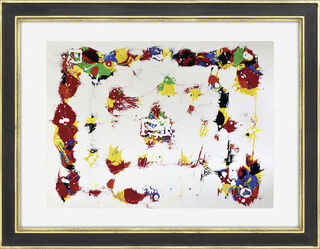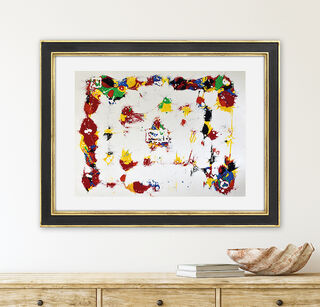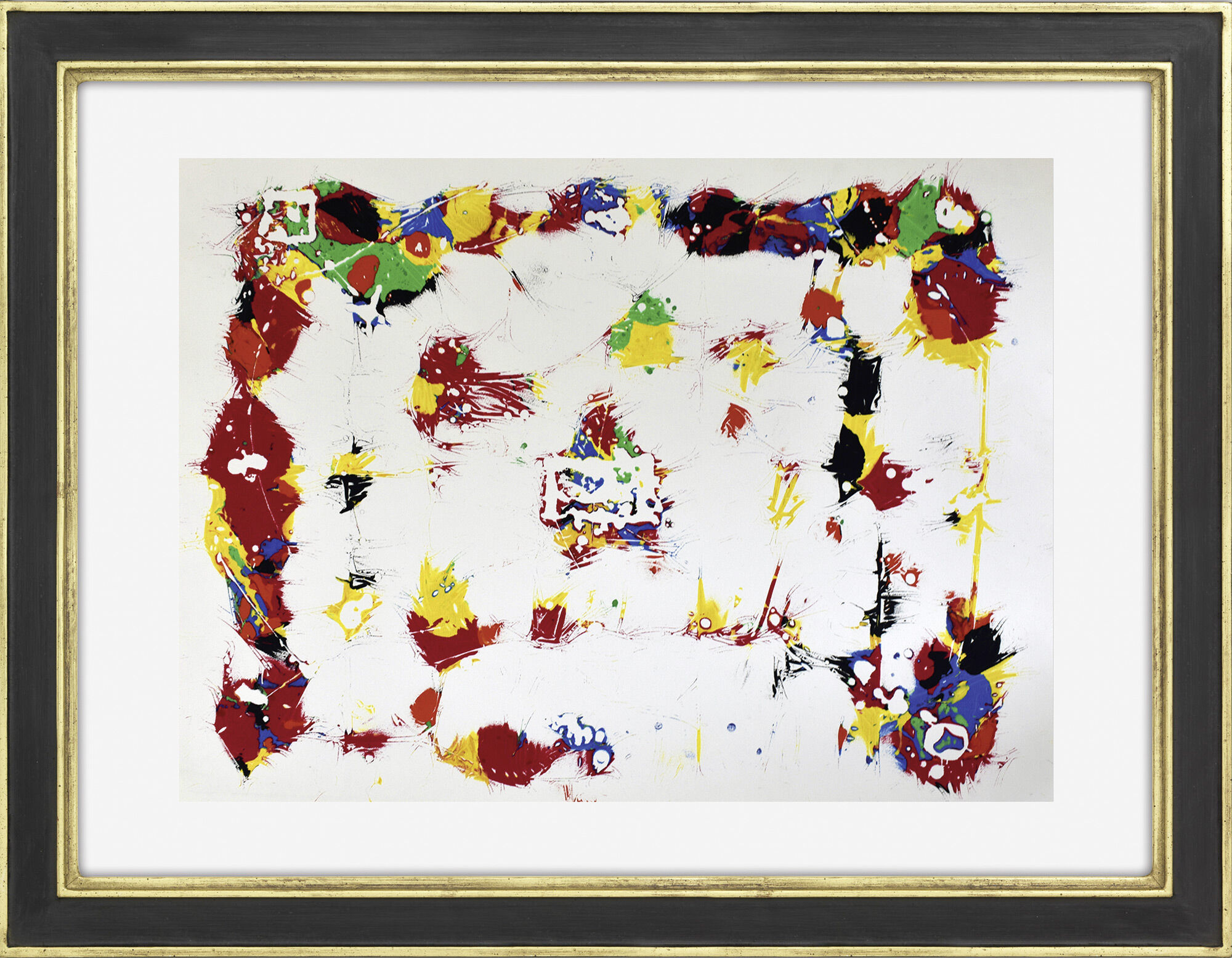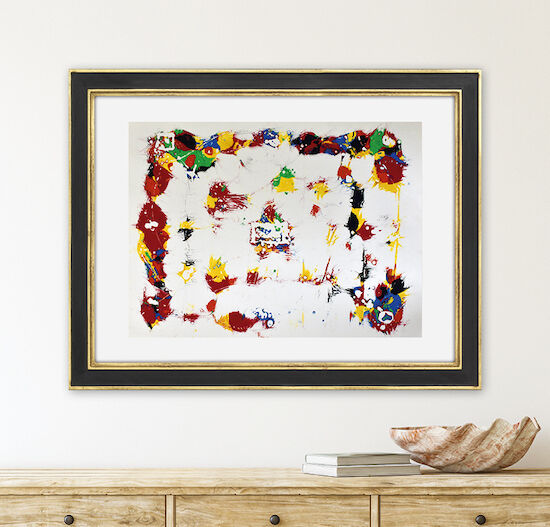Picture "Untitled (SFS-89)" (1989) (Unique piece)


Picture "Untitled (SFS-89)" (1989) (Unique piece)
Quick info
unique piece | stamped | certified | monotype on paper | framed | size 80 x 98 cm
Detailed description
Picture "Untitled (SFS-89)" (1989) (Unique piece)
This work from 1989 is a monotype, a process that allows only one print and thus makes the work a sought-after unique piece.
After studying painting with Mark Rothko, Sam Francis moved to Paris for several years and returned to his native California in 1962 after spending time in Bern, Tokyo and New York. Incidentally, Francis once said about his artistic work: "There is no development in my pictures. There is a rhythm. They are all intense, from beginning to end."
Original monotype on Arches paper, 1989. Estate stamp on the back. With a certificate of authenticity from the artist's estate. Motif size/sheet size 57.3 x 76.3 cm. Size in frame 80 x 98 cm as shown.
About Sam Francis
1923-1994
Sam Francis is one of the most important representatives of abstract expressionism. His works are on display at the Tate Gallery and the Museum of Modern Art, among others. In 1956, Time Magazine called him the "Most Attractive American Painter in Paris", and in May 2010, his 1957 work "Middle Blue" was sold for over 6 million dollars at an auction by Christie's.
The German newspaper DIE ZEIT characterised the early works of Sam Francis and his colleagues in post-war American painting as "painted declarations of independence in the direction of Europe". From 1950 onwards, Francis occasionally drew inspiration from the paintings of Claude Monet and Henri Matisse.
After studying painting with Mark Rothko, he moved to Paris for several years, where he met many important artists, such as Jean-Paul Riopelle, who had a lasting influence on Francis' style. It was not until 1962 that he returned to his native California after periods in Bern, Tokyo, and New York.
He became world-famous as an important representative of action painting. He let colours flow into each other on the painting surface in rivulets of varying strength, causing them to mix into blobs of colour. Francis once said about his artistic work: "There is no development in my paintings. There is a rhythm. They are all intense, from beginning to end."
Term for paintings and sculptures that are detached from the representational depiction, which spread throughout the entire western and parts of the eastern world from around 1910 onwards in ever new stylistic variations. The Russian painter Wassily Kandinsky, born in 1866, is considered the founder of abstract art. Other important artists of abstract art are K.S. Malewitsch, Piet Mondrian, and others.
A one-of-a-kind or unique piece is a work of art that has been personally created by the artist. It exists only once due to the type of production (oil painting, watercolours, drawing, etc.).
In addition to the classic unique pieces, there exist the so-called "serial unique pieces". They present a series of works with the same colour, motif and technique, manually prepared by the same artist. The serial unique pieces are rooted in "serial art", a type of modern art, that aims to create an aesthetic effect through series, repetitions and variations of the same objects or themes or a system of constant and variable elements or principles.
In the history of arts, the starting point of this trend was the work "Les Meules" (1890/1891) by Claude Monet, in which for the first time a series was created that went beyond a mere group of works. The other artists, who addressed to the serial art, include Claude Monet, Piet Mondrian and above all Gerhard Richter.






